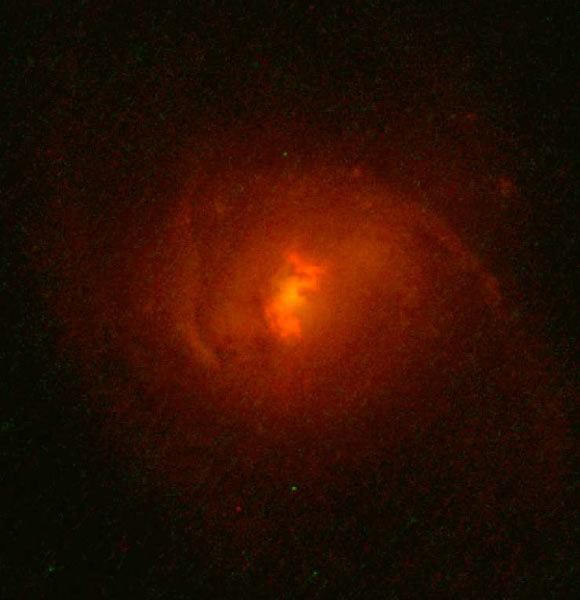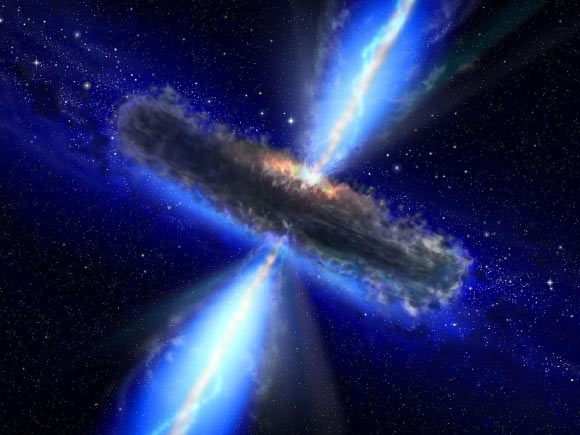Using NASA’s Nuclear Spectroscopic Telescope Array (NuSTAR) space observatory, astronomers have detected X-rays from five supermassive black holes previously clouded from direct view by dust and gas.

This Hubble image shows SDSS J0011+0056 (also known as Mrk 34), one of the nine galaxies targeted by NuSTAR. The high energy X-rays detected by NuSTAR revealed the presence of an extremely active supermassive black hole at the galactic center. Image credit: Hubble Legacy Archive / NASA / ESA.
The scientists pointed NuSTAR at nine candidate supermassive black holes that were thought to be extremely active at the center of galaxies, but where the full extent of this activity was potentially obscured from view.
High-energy X-rays found for five of the black holes confirmed that they had been hidden by dust and gas.
The five (SDSS J0011+0056, J1034+6001, J1218+4706, J1243-0232, and J1713+5729) were much brighter and more active than previously thought as they rapidly feasted on surrounding material and emitted large amounts of radiation.
“For a long time we have known about supermassive black holes that are not obscured by dust and gas, but we suspected that many more were hidden from our view,” said George Lansbury, a postgraduate student at Durham University, UK, who is the lead author of a new study accepted for publication in the Astrophysical Journal (arXiv.org preprint).

An artist’s illustration of a supermassive black hole, actively feasting on its surroundings. The central black hole is hidden from direct view by a thick layer of encircling gas and dust. Image credit: NASA / ESA.
“Thanks to NuSTAR for the first time we have been able to clearly see these hidden monsters that are predicted to be there, but have previously been elusive because of their ‘buried’ state.”
He added: “although we have only detected five of these hidden supermassive black holes, when we extrapolate our results across the whole Universe then the predicted numbers are huge and in agreement with what we would expect to see.”
“High-energy X-rays are more penetrating than low-energy X-rays,” said co-author Dr Daniel Stern of NASA’s Jet Propulsion Laboratory in Pasadena, “so we can see deeper into the gas burying the black holes.”
“NuSTAR allows us to see how big the hidden monsters are and is helping us learn why only some black holes appear obscured.”
_____
G. B. Lansbury et al. 2015. NuSTAR Reveals Extreme Absorption in z < 0.5 Type 2 Quasars. ApJ, accepted for publication; arXiv: 1506.05120







